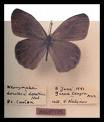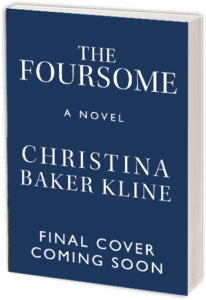Earlier this week I posted Part 1 of this conversation with book designer Julie Metz on what makes a successful cover. Here’s the rest.
What should writers know about how to get their ideas across to a book designer? Writers who have labored over their books for years might be horrified to know that designers do not always have an opportunity to read their manuscripts before designing the cover. This is a result of scheduling and the sheer volume of work required of art departments. I often think it would be helpful to have authors write a short description of their book, not like the teaser ad copy we designers get on tip sheets, but a true synopsis that also identifies recurring imagery and themes. Writers are in the word business, but designers are in the image business. The author knows what her own images and themes are better than anyone else. That said, once those ideas have been successfully communicated, designers love to have the freedom to work with those ideas in ways that might surprise and delight an open-minded author.
 Can you give examples of some book covers you particularly like? Just a very few of the smart, clever covers I personally admire include all of David Sedaris, Lorrie Moore’s Birds of America, Nabokov’s Short Stories, J.M. Coetzee’s all-white novels (stark, spare, just like his writing). I have a small but cherished collection of book covers designed by greats like Paul Rand and Alvin Lustig. And then there are classics like Catch-22. The original cover design still looks modern and eye-catching.
Can you give examples of some book covers you particularly like? Just a very few of the smart, clever covers I personally admire include all of David Sedaris, Lorrie Moore’s Birds of America, Nabokov’s Short Stories, J.M. Coetzee’s all-white novels (stark, spare, just like his writing). I have a small but cherished collection of book covers designed by greats like Paul Rand and Alvin Lustig. And then there are classics like Catch-22. The original cover design still looks modern and eye-catching.





Women writers I know sometimes lament that publishers want to make their book covers too “chick litty” — that is, ultra-feminine, with soft colors and pretty-pretty designs. Publishers counter that they want to sell books. What do you think of this ongoing debate? A huge proportion of book buyers are women, so it certainly makes sense for publishers and booksellers to market to this audience, though at times it seems as if books are being packaged like cosmetics. I have designed my share of true chick-lit covers! Some books clearly fit right in to this category of light entertainment and are well served by light and bright (and pink!) packaging. It’s too bad when a more literary novel ends up too pink and perky. So I can imagine that many women authors feel that the marketplace is dumbing down their work.
What makes a bad book cover? Too much cleverness can confuse book buyers. Cluttered or just plain ugly turns them away. Bland, tired, clichéd – ditto.
Have you ever had an author who vehemently didn’t like a cover you designed? If so, who won that battle, and why? Over the course of twenty working years, that scenario has happened at least a dozen times. My job is to be resilient in the face of rejection, not get too attached to my work, and remember that I am in a service industry! Once, many years ago, an author and editor killed a job I designed that the art director and I loved. “An award winner,” he said (we graphic designers live for those awards). I hung up the phone and cried. After I calmed down, I decided that it was time to grow a tougher skin, and I did. Another time I was called in to meet with a very famous author (who shall remain nameless) who spoke rudely about our efforts to create a cover for one of his novels. I grew even thicker skin. Now I try to cultivate some Buddhist-style detachment: I do my very best work and then release it to my client. I try to have a good attitude, and I try to make my art director’s job easy.
How important do you think a book cover is, ultimately, to the success of a book? In this era, marketing and packaging are extremely important. The cover needs to be strong enough so that when it appears at the size of a postage stamp in a magazine or online review it will still have some impact. But the truth is that while a bad cover may harm sales of a worthy book, and a great cover can help sales of a good book, a great cover will not sell a bad book.
